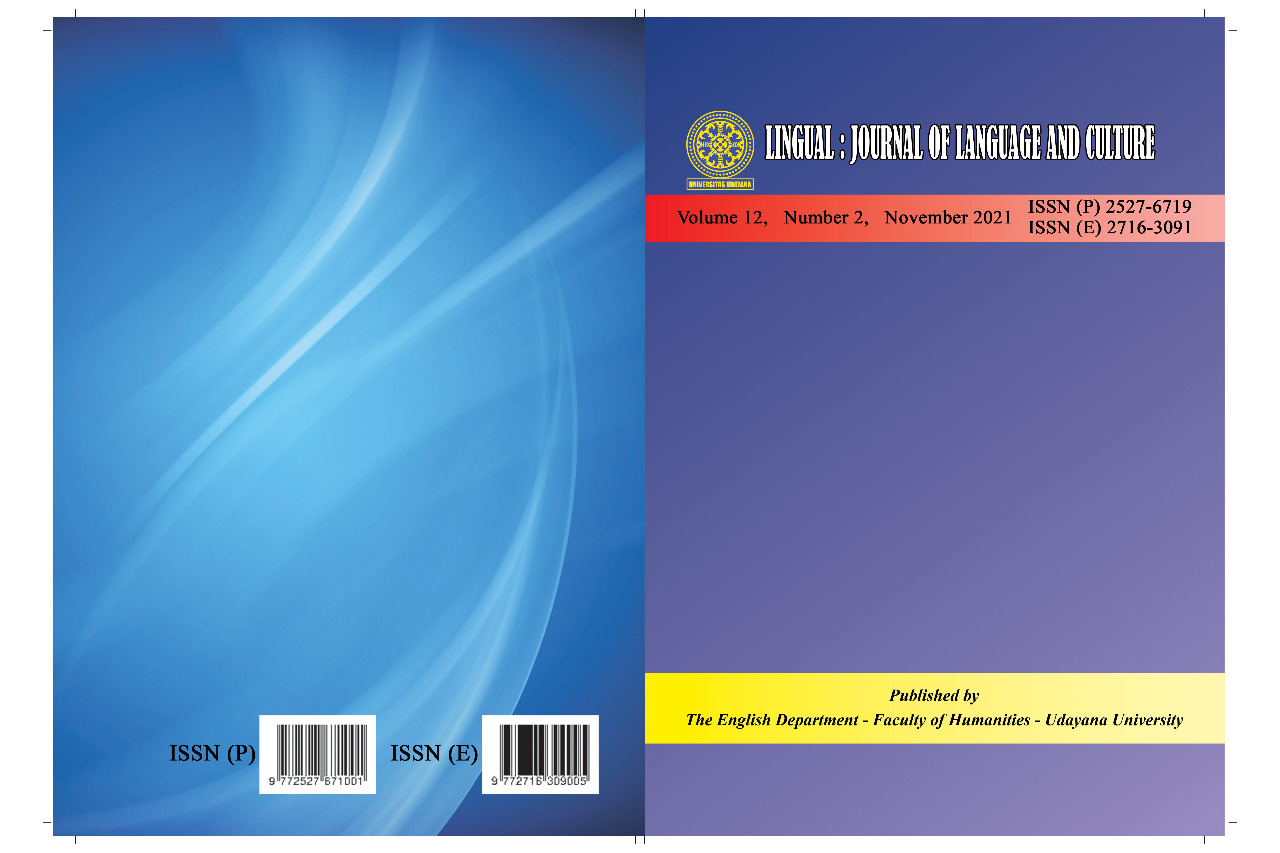The Interpersonal Meanings of Words and Images in Ads: An Intersemiotic Complementary View
Abstract
This study aims to find out the interpersonal meaning and the intersemiotic complementary in public service advertisement of selected violence against children prevention campaign. Employing Royce’s intersemiotic complementary framework (2001), it analyzed how the visual and verbal signs work together to create common messages sent to the public as viewers/readers. Based on the analysis, it is found out that the five aspects of visual features --visual contact, social distance, involvement, power relation, and modality—have worked together to construct the interpersonal meaning. The close up shot showing the detail of the bruises on the nose emphasizing a high modality; it represents a high naturality. The boy in bruises looks directly at viewers’ eyes, demanding a help from them. The equal frame on the picture tells the readers that the boy can be part of every one’s life. It may happen in any place and the readers are asked to do take an action. In terms of verbal features, the declarative sentences are used to inform the facts. It is to highlite the clear message in the image, saying that such a violence may be taken by a mother who inherits the boy’s nose—the one who actually loves him very much, but the situation has changed her a lot. Through the way the producers organize the verbal text the readers may take their action to stop the child abuse. Both visual and verbal modes are contributes to convey interpersonal meaning. The intersemiotic complementary in the advertisement is realized interpersonally through the meanings projected in both modes through the reinforcement of address.












